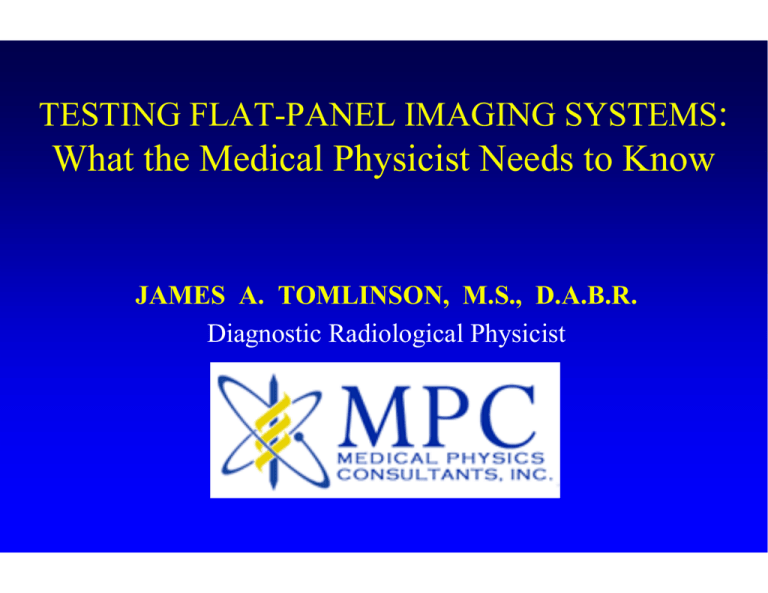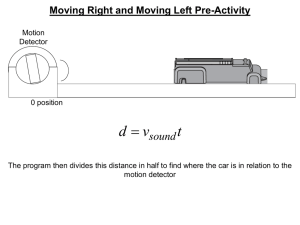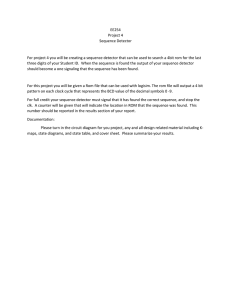: What the Medical Physicist Needs to Know TESTING FLAT-PANEL IMAGING SYSTEMS
advertisement

TESTING FLAT-PANEL IMAGING SYSTEMS: What the Medical Physicist Needs to Know JAMES A. TOMLINSON, M.S., D.A.B.R. Diagnostic Radiological Physicist Topics • • • • Image Uniformity and Artifacts Image Quality - Detail Image Quality - Contrast Detector Sensitivity Image Uniformity - Setup • PMMA – 8” thick x 14”x17” • Copper – 2-3 mm x 14”x17” • Typical radiographic technique or AEC Image Uniformity - Analysis • Visual inspection of image to look for shading or signal brightness variation • Use typical display window, then narrow window • Provides a quick review • Comprehensive testing requires analytical tools to measure signal variation across image Image Artifacts • Inspect uniformity image for: – signal voids or defects – lines (banding) – residual image burn • CAUTION: Latent images can result from phosphor burn if detector dose is too high ! Image Quality - Detail • Primarily controlled by sampling pitch (pixel size) and display pitch • Use PSF, LSF, or ESF to generate MTF curve • Line-pair test tool quickly evaluates cut-off frequency in the field DF Detail • Past experience using line-pair test tool with digital fluoro shows increasing detail with decreasing image size, because fluoroscopic image has more detail than converted digital matrix , up to 2048x2048. FOV (cm) 20 16 13 lp/mm (1k) 2.5 3.2 3.9 Flat Panel Detail • Flat panel detectors often have the same cut-off frequency regardless of FOV. FOV (cm) 20 16 13 lp/mm (1k) 3.5 3.5 3.5 Digital Zoom • Because native detector element size is constant, it is limiting factor with detail • When change FOV, the system does “digital zoom”, by overlaying original data pattern over new display matrix (like digital cameras) • Since original pattern remains constant from sampling frequency, so does cut-off frequency detector matrix test pattern detector matrix display matrix zoom area detector matrix zoom same cut-off frequency Magnification • If detector matrix (512-1024) ≤ display matrix (1024), image magnification (zoom) results in spread of data across pixels and no increased detail • If detector matrix (2048) is > display matrix (1024), image magnification (zoom) results in increased detail displayed Pixel Binning • Some systems combine a group of detector element data together to form one pixel for display • Results in larger than expected blur and low cut-off frequencies • Used in some applications, such as cardiac cath, where data throughput is restricted at high frame rates Pixel Binning (1k display) FOV xlarge large medium small lp/mm 1.7 1.7 1.7 3.5 Sampling Pitch Size 3 MP Matrix 1500x2000 Pixel 0.24 mm Pitch 2 lp/mm 5 MP 2000x2500 0.17 mm 3 lp/mm 9 MP 2700x3300 0.13 mm 3.8 lp/mm Aliasing • To reduce aliasing errors with detector and display matrices , place test object at 450 to the matrix • Underestimates cut-off frequency • Divide observed frequency by sin 450 (0.7) Typical DR Resolution • 3-5 lp/mm • Should use magnifying glasses, especially for old senior physicists, due to visual loss with age Image Contrast • Contrast sensitivity and resolution is much better for DR systems than screen/film systems • Image should be viewed at a greater distance than for detail review. Dynamic Range Signal DR S/F Log Exposure Contrast Sensitivity • Test tools commonly available to determine cutoff contrast level (%) and size • Typical contrast = < 1% Sensitivity 16% 4.5% 0.5% 2% 1.5% Resolution 10 mm 0.6 mm Detector Radiation Sensitivity • Measure radiation to the detector, required to produce acceptable image • Clinical medical physicists need to know what the patient entrance radiation exposures are, for exposure control, organ dose calculations and fetal dose estimates AEC Calibration • To assess routine patient exposure, the ESE from AEC should be assessed with 4-10 inches of PMMA • The kVp should be appropriate for the thickness • We have found that for patient ESE: CR 2x > Screen/film 2x > DR My Image Quality Phantom • With readily available test tools, a combo phantom can be built to provide quick evaluation of detail and contrast. • Considerable cost savings to other phantoms… 1.0 % contrast 4.0 lp/mm “Name That Phantom” • • • • • D.R.I.Q. D.R.I.P. The TESTOOL M.I.Q.P. P.E.D.R.O.





